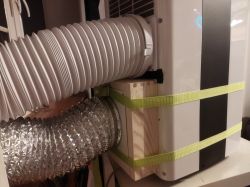But you haven't described how this relates to a change in room temperature
Company Account:
Czy wolisz polską wersję strony elektroda?
Nie, dziękuję Przekieruj mnie tambrofran wrote:It would be even better if 2 pipes could be inserted into such a frame: inlet and outlet. But then the monoblock would have to have 2 inputs (maybe there are such?). In such a solution, it would not draw in air from the outside.

JuliuszCezarG wrote:Hello. I know that it is not the time to do this, because it's winter and nobody thinks about cooling the room, but one has to be prepared for summer. When, if not now. ?
I live in an old building, there are chimneys in the apartment that are closed after old tiled stoves and ventilation ducts. Or maybe it is possible to break into one of the ducts in the room, insert a grate suitable for the inlet of the pipe with a gate valve in the event of removing the pipe and throw warm air into this ventilation or chimney duct. Is it possible and safe?
TomekNiemczyk wrote:A very old topic, but what do you think about the DIY idea to recreate the Warmatec thermoblock solution using a mosquito net frame from Allegro with window hooks, only instead of a mosquito net, plexiglass with a hole for an air conditioner pipe? It seems to me a cool solution for about 30-40% of the price offered by Warmatec and it seems quite simple to make. Or even simpler instead of plexiglass, some durable material with a pipe collar. In the case of plexiglass, it is worth considering a balcony frame with hinges to open the window to the outside if it is the only window in the room.
Added after 2 [minutes]:
JuliuszCezarG wrote:Hello. I know that it is not the time to do this, because it's winter and nobody thinks about cooling the room, but one has to be prepared for summer. When, if not now. ?
I live in an old building, there are chimneys in the apartment that are closed after old tiled stoves and ventilation ducts. Or maybe it is possible to break into one of the ducts in the room, insert a grate suitable for the inlet of the pipe with a gate valve in the event of removing the pipe and throw warm air into this ventilation or chimney duct. Is it possible and safe?
I am also considering these options, only in the attics I would have to break through to the ventilation chimney because the old building and the attic, no one added ventilation in the rooms, but otherwise a cool option, by all means

